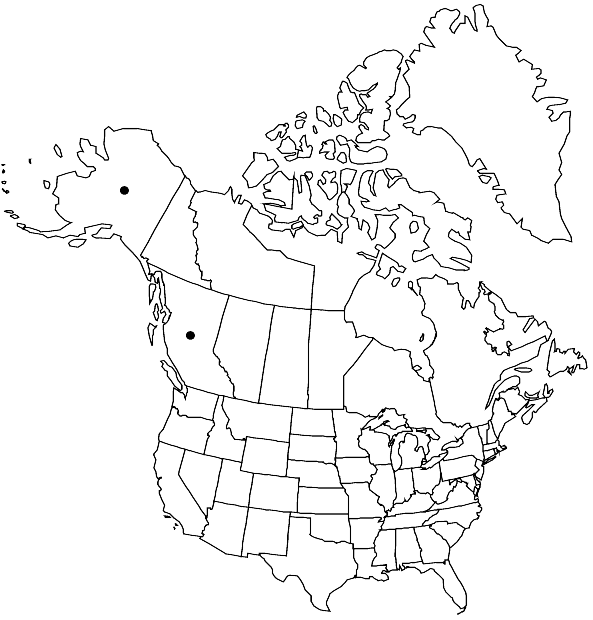Sphagnum inexspectatum
Lindbergia 30: 59. 2005,.
Plants moderate-sized, normally erect; yellowish to reddish brown, greenish in shaded forms; capitulum moderately distinct and rounded. Stems green to brown; superficial cortex of partly 1 and partly 2 layers of thin-walled enlarged cells. Stem leaves triangular-lingulate to ovate-lingulate, 0.8–0.9 mm, apex rounded, straight; hyaline cells mostly non-septate, fibrillose in distal 1/3–2/3 of leaf, a few ringed pores at corners of cells and along commissures on convex surface, ringed pores along the commissures on the concave surface in greater numbers than on convex surface. Branches short, not turgid. Branch fascicles with 2–3 spreading and 1–2 pendent branches. Branch leaves broad-ovate to ovate-lanceolate, 0.9–2.1 mm, straight; hyaline cells with numerous ringed pores (10–20) along the commissures on the convex surface, a few pseudopores and ringed pores (less than 8 per cell) occur on the cell angles on the concave surface. Sexual condition dioicous. Capsule exserted, with few pseudostomata. Spores 36–39 µm; coarsely papillose on both surfaces; proximal laesura less than or equal to 0.5 spore radius.
Habitat: Ecology unclear, but growing in carpets in depressions, blanket mires
Elevation: low to moderate elevations
Distribution

B.C., Alaska, Asia.
Discussion
Sphagnum inexpectatum is frequently collected with S. tenellum, S. pacificum, S. andersonianum, and S. rubellum in weakly minerotrophic blanket mires. It is similar in size to S. subsecundum, with which its range completely overlaps. The latter species has many of the branch leaves subsecund while those of S. inexspectatum are straight. The stem leaves of S. inexspectatum are also conspicuously larger than those of S. subsecundum.
Microscopically Sphagnum inexspectatum has a stem cortex that has enlarged thin-walled cells that form 1–2 layers, whereas S. subsecundum has only one. The stem leaves of S. inexspectatum also have numerous commissural pores in the hyaline cells in the distal half of the concave surface, whereas S. subsecundum has only a few if any in this region and these are more free than commissural.
Selected References
None.